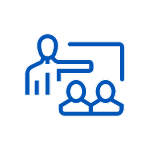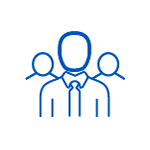More than 7 hours in length
Over 40 Learning Objects included
Access to content and exercises for 12 months
Developed by a Learning Tree Subject Matter Expert
Agile Fundamentals On-Demand
Course 7918
- Language: English
-
8 PMI PDUs
- Level: Foundation

This On-Demand Agile Fundamentals Training provides a comprehensive overview of the essential concepts, processes and tools of lean project management and lean methodology. You will learn how to apply these methodologies to improve the product strategy, eliminate waste and streamline the product management process. The course also covers extreme programming (XP) practices, including feedback loops and how to manage product backlog items to help deliver work efficiently. This training is designed to help product team members understand the product vision and how to continuously improve their processes for maximum impact.
Agile Fundamentals On-Demand Training Delivery Methods
On-Demand
Agile Fundamentals On-Demand Training Information
In this Agile Fundamentals training, you will:
- Describe the drivers for Agile’s adoption.
- Explain that Agile is about delivering maximum customer value in the face of change.
- Apply the key concepts of Agile Product Development as expressed through the Agile Manifesto.
- Describe the history of Agile product development.
- Distinguish between traditional and Agile approaches to product development.
- Describe what it means for Agile transformations to involve a paradigm shift.
- Apply incremental delivery and iterative development to drive fast feedback cycles.
- Recognize the main elements of the most used approaches to Agile--Scrum, Kanban, and the engineering practices of EXtreme Programming (XP).
- Explain the importance of the team model in Agile.
- Explain how to cultivate a high-performing, self-organizing team.
- Describe the Agile mindset for individuals and organizations.
- Identify how impediments lead to opportunities for continuous improvement in Agile.
- Describe how and why Business Agility and Agile product development are profoundly customer-centric.
- Identify Agile planning approaches at the visionary, strategic and tactical levels - from Product Vision to Iteration Goal.
Prerequisites
None.
Agile Fundamentals On-Demand Training Outline
- Recognize how accelerating complexity is a key driver for Business Agility
- Explain the values and principles of Agile product development
- Identify precursors to and influences on the Agile Manifesto
- Describe why incremental delivery and iterative development are essential for Agile development
- Explain the practices of Scrum product development
- Describe the principles and practices of Kanban
- Summarize the core principles of XP software development
- Describe the benefits of decentralized decision-making
- Define self-organizing teams
- List characteristics and principles of self-organizing teams
- List characteristics of a highly collaborative team member
- Explain how to build a self-organizing team
- Describe stages in team development
- Identify team dysfunctions
- Describe strategies for eliminating team dysfunctions
- Describe resilient learning teams
- Describe how learning leaders help teams become more effective
- Describe how an Agile mindset is critical to the success of an Agile transformation
- Describe the leadership mindset observed in successful Agile implementations
- Contrast transactional, transformational and servant leadership styles
- Contrast the Agile Professional Mindset with the Bureaucratic Mindset
- Contrast a growth mindset with a fixed mindset
- List indicators of an Agile mindset for teams and individuals
- Describe the Agile Fluency Model
- Compare customer value and learning value and how they contribute to business value
- Contrast product culture and project culture
- Explain the Efficiency Paradox
- Use Kanban boards and cumulative flow diagrams to track workflow
- Explain why measuring outcomes is more important than measuring outputs
- Explain how Agile teams can build quality into the production process
- Explain why it is important to limit work in progress (WIP) and how it can be achieved
- Compare product vision goals, user and business goals, product goals, and iteration goals
- Describe techniques for envisioning products
- Describe the importance of understanding product strategy
- Recognize Task Boards as visualizations of Sprint plans, and contrast them with Kanban Boards
- Categorize stakeholders
- Describe techniques for engaging stakeholders
- Identify the goals of product backlog refinement
- Write user stories that meet INVEST criteria
- Use relative estimation techniques to estimate effort
Need Help Finding The Right Training Solution?
Our training advisors are here for you.
Agile Fundamentals On-Demand Training FAQs
No specific experience is required.
No. While many of the same points are covered, the on-demand course does not provide opportunities for small-group collaboration. The on-demand course does include more details about the Agile methods of Scrum, Kanban and XP and how they relate to each other.
An outline of the content you will receive with the on-demand training offerings can be seen above. You will also get access to any new on-demand content that becomes available during your annual enrollment period.
No. Currently, participants that complete the on-demand course do not qualify for the IC Agile Certified Professional certificate. Participants who complete the Agile Fundamentals Instructor-led course and pass the exam qualify for the ICP certificate.
Scrum is the name of a popular methodology for applying Agile. Scrum is a thin framework of roles, artifacts, and events that support self-organizing, cross-functional development teams. More than three-quarters of Agile teams claim to be using Scrum.
Agile software development is a product engineering approach that delivers high-quality, working software products early and often. This allows the customer to generate business value earlier and provide feedback to the developers. In addition, agile methods emphasize constant, open, honest, and real-time communication between developers and their customers.
This course covers some of the most popular methodologies for performing Agile work, including Scrum, Kanban, and XP.
The traditional waterfall software development method treats the analysis, design, coding, and testing as separate phases in a linear software development plan. Conversely, Agile is an iterative software development methodology focused on flexibility in adapting to changes and delivering value early and often.
Existing credential holders are responsible for reporting all Continuing Certification Requirements Program (CCR) activities to PMI (Project Management Institute). To report the completion of a Learning Tree course, you can use the Online PDU (Professional Development Units) Resources System.
- Go to the PMI Continuing Certification Requirements System https://ccrs.pmi.org/
- Log in with your username and password
- Locate the claim code associated with your course in the table in this document
- Click on “Report PDU for this activity”
- Fill in the date started and date completed
- Click on the box agreeing that this claim is accurate and then submit
PDU Information for This Course:
- Total PDUs: 8 Hours
- Ways of Working: 8 Hours
- Power Skills: 0 Hours
- Business: 0 Hours
- PMI Claim Code: 1154N2ZPUM




